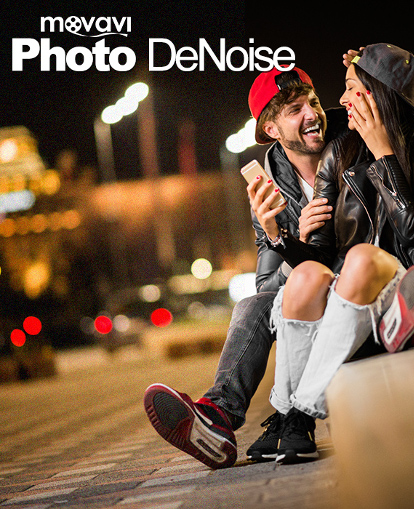

I use both programs exclusively for noise reduction all further processing is done in Adobe Lightroom Classic, as I have been accustomed to for years.Best AI ChatBot Software 2020. The great thing about this program is that it uses artificial intelligence to recognize the different objects and background in the picture, apply adaptive noise reduction, and make your photo clear and professional-looking.I’ve recently started using the DeepPRIME algorithm developed by DxO, which is included in DxO PhotoLab 4 Elite and, more recently, in DxO PureRAW. Nowadays, useful results can even be achieved with images taken at ISO 12,800, something that was merely incredible just a few years ago.When you use Easy Photo Denoise software, you can fix grainy photos by removing the digital noise and reducing the graininess of the shot.
...

Denoise Programs Full Image To
Here is my result in a scaled-down full image to demonstrate, that the result is somewhat comparable in terms of brightness and color.The image contains a watermark because I used the test version of Topaz for the review. Basically, this is the same approach that I took above with DxO PhotoLab 4 and DeepPRIME.However, the resulting image looks very dull and dark at first, so that I had to make extensive corrections to achieve a comparable result to the one I had previously got in Lightroom. I then re-imported this into Lightroom.
At first, I used the automatic settings in Topaz Denoise AI (Noise 40 Sharpening 28, Rest 0): Ibis head - Topaz Denoise AI - TIFF - N40S28 Ibis plumage - Topaz Denoise AI - TIFF - N40S28This is already better, but still doesn’t come close to the DxO DeepPRIME results. From there, the image can be transferred to Topaz Denoise AI as a 16bit TIFF file using the menu item “Edit in…”. The result is even significantly worse than what I achieved with Lightroom Classic alone: Ibis head - Topaz Denoise AI CR3 -> DNG Ibis plumage - Topaz Denoise AI CR3 -> DNGThus, in my opinion, direct processing of CR3 raw files with Topaz Denoise AI is currently not of any use.I have therefore used Topaz Denoise AI directly with Lightroom. Topaz Denoise AI CR3 -> DNGEven the scaled-down version is not very impressive, which is unfortunately confirmed in the 100% crops.
However, the DxO DeepPRIME algorithm seems much better to me. I therefore tried to improve the result manually (setting Noise 60, Sharpening 18): Ibis head - Topaz Denoise AI - TIFF - N60S18 Ibis plumage - Topaz Denoise AI - TIFF - N60S18I like this version better, but it still contains artifacts between the legs and at the back of the head.I then denoised the image once more with Topaz Denoise AI using the “AI Clear” setting, which is supposed to gain better results with high-ISO shots, and left the rest of the processing as before.First the automatic setting, here Topaz Denoise AI Clear sets the denoising level to Medium: Ibis head - Topaz Denoise AI Clear - TIFF - Medium Ibis plumage - Topaz Denoise AI Clear - TIFF - MediumSince that was still very noisy, I changed the denoising setting to High, then it looks like this: Ibis head - Topaz Denoise AI Clear - TIFF - High Ibis plumage - Topaz Denoise AI Clear - TIFF - HighWell, the artifacts are partially gone, but I’m still not really thrilled with the result with the AI Clear setting.All in all, Topaz Denoise AI is already very good, at least better than what I can manage in Lightroom alone. Note in particular the artifacts at the back of the head and the noise between the legs.
You can find and download it here.I look forward to your comments and edits. However, for now, I will continue to use DxO DeepPRIME to process my noisy high-ISO images.But if you want, you can use the software of your choice to work on the RAW file I used here.


 0 kommentar(er)
0 kommentar(er)
